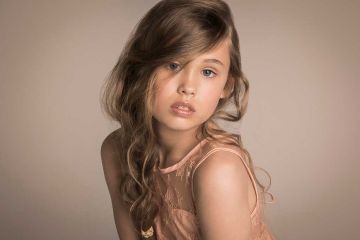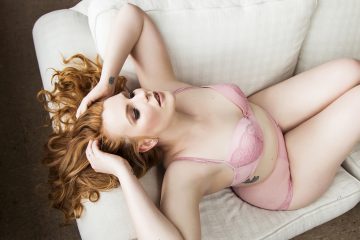The Novice's Guide to Product Photography
If a image is worth a thousand words, a spectacular product picture deserves a thousand site sees. Although I do not have information to back up that statement (yet), product photography can be exceptionally important to your ecommerce internet site approach.
To reach your target market members that like purchasing online, you additionally need to provide your target market clear, distinctive pictures of your items.
Yet product photography isn't as easy as pointing as well as shooting. Even one of the most fundamental items require the proper devices, lights, and space to generate attractive images that sell consumers right from the acquisition page.
6 Product Photography Tips ( and also Examples) for Taking Pictures That Offer
Here are the ideas, examples, and also products you'll need to effectively picture and also market your products in a manner that makes your site visitors and also leads wish to convert.
1. Do not hesitate to use your mobile phone's cam.
This is the part where I'm meant to persuade you to buy a high-end, 50-megapixel (MP) electronic camera with a 100-millimeter screw-on lens. But I'm not mosting likely to do that.
If you already have a electronic camera that fits this description, capitalize on it. But also for many sorts of products, it's entirely appropriate to shoot product photos on a smartphone.
Newer mobile phones boast powerful camera lenses and also settings that enable you to optimize your shots for the different sorts of light and also settings you might fire in.
If you need a lot more convincing, just look into Apple's Shot On An apple iphone project as well as the pictures that have actually arised from it over the years such as this:
2. Fire from a tripod for photo uniformity.
Prior to explaining tripods, I'm bound to start with a cardinal regulation: Don't prop your phone versus something strong to aim your lens toward the topic.
It's just also simple for this makeshift setup to slide around during the shoot and also cause disparities in your photos' appearance. If you relax your cam on, claim, a pile of books, just make sure this arrangement does not alter throughout the shoot.
There's no damage in holding your camera on your own when firing simply a couple of product images for your ecommerce internet site. Yet as your service expands, and you take extra images of even more items, it can be challenging to standardize the product's alignment in each photo when firing handheld.
To make certain consistency throughout your items, you'll need a tripod. As well as fortunately, purchasing one isn't constantly the huge, industrial-sized investment it made use of to be.
Here are 2 types of tripods to think about.
Traditional vs. Flexible
This is a tradition tripod-- there are conventional tripods offered for both video cameras and also smart devices.
A flexible tripod can be adjusted in a number of means. You can flex its legs and position it on various surface areas to get the angle you require.
Mobile Grip

There's often a screw on the top of your tripod which attaches to your cam to hold it in place. The underside of a lot of professional-grade cameras has a screw hole just for this objective, however mobile phones can use the complying with adapter:
The adapter holds the sides of your smartphone and can screw right into either type of tripod, permitting you to run the cam regulates with the phone screen facing outside as well as towards you.
When you figure out which mount you'll need, establish it up in front of your product, and consider placing three items of tape on the ground to mark where you would love to maintain each leg of your tripod over the course of the shoot.
3. Select all-natural light or fabricated light.
Never take too lightly how certain types of light can enhance (or hinder) your product photography. Bear in mind, purchasers get the very best look at an thing personally, where they can see everything they require to prior to getting. The ideal illumination plan aids you reveal those important decision-making product features when all website site visitors have to go on is a photo.
A single lights configuration might not benefit every product-- a illumination setup that helps some products could compromise the appearance of others.
There are two types of light you can select as your main light: all-natural and fabricated light.
All-natural Light
Natural light refers to sunlight-- straightforward as that. It's likewise referred to as "soft light" since the sunlight casts a bigger, softer series of light than, claim, a light beaming straight on the product. Ecommerce product shots prosper in natural light if:
The product is shot outside or implied to be used outside.
The product is utilized by, worn on, or shot with a person ( individuals tend to look much better in all-natural light).
You're trying to emphasize the product's surroundings, rather than fashion photography gold coast specific characteristics of the product.
Here's an instance of a shot utilizing natural light:
Man-made Light
Artificial light includes candle lights, fire, and much more generally, light bulbs. It's additionally described as " difficult light" because it produces a smaller sized yet a lot more focused light surface area. This sort of light deals with products with physical details that need to be highlighted to impress an online shopper.
As a general rule, adhere to just one kind of light per photo-- all-natural or synthetic. Adding all-natural light to an artificially lit photo can soften a product that's implied to look sharp, and also adding artificial light to a normally lit photo can develop a product that's meant to look soft. You do not wish to enter your own method.
4. Fill up or jump your light to soften darkness.
Whether you use natural light or synthetic light, you'll require to reduce the darkness that any kind of prospective difficult light casts on the opposite end of a product.
There are three ways to do this:
Fill up Light
Include an additional, less-intense source of light to supplement your main light. This extra light is called your fill light and is made use of as a counterbalance to soften the natural shadow your primary light creates behind an item.
To do this, place your fill light opposite your major light so your product sits in between both lights.
Flashbulb Bounce Card
A bounce card, or reflector card, is a small card that " shows" or "bounces" the major light back onto the surface under your product to lower darkness.
Some bounce cards connect to the flashbulb of a professional video camera lens to diffuse the light from the cam's flash. This card sprays a softer light onto the topic from over your collection-- instead of directly at it-- so you don't have long darkness trail behind the item you're firing.
Standalone Bounce Card
If you're shooting from a smart device, a flashbulb bounce card isn't an choice, since you don't have a physical flash you can connect it to. Rather, make your own standalone bounce card positioned contrary your primary source of light.
For newbies to product photography, this bounce card can efficiently change your fill light, which counters the tough light from the camera flash or lamp that's facing towards the front of your product.
5. Make use of a move or picture setting to stress the product.
There isn't one right method to place your product, lights, and bounce cards-- they can alter considerably relying on your history. However do not select a history based upon what's easiest to produce. Backgrounds should resemble how you desire your customers to view your product when watching it online.
Take into consideration initially whether you 'd such as a white history or a more vibrant, real-world background. There's an very easy way to achieve each one.
White Background: Move

For white histories, it's not as simple as establishing a table against white drywall. Even smart device electronic cameras can pick up little blemishes on a white wall that you would not notice with the nude eye. To catch a best white background with no corners or imperfections, make use of a sweep.
A sweep is a large flexible sheet of paper, whose bottom acts as the surface area under your product and after that contours up right into a white wall behind the product.
On video camera, the sweep's curve is invisible, emphasizing crucial product information as well as permitting the thing to possess all of a website site visitor's focus.
Real-World Background: Portrait Setting
Dynamic, real-world backgrounds are really appealing when shooting products that have a certain usage or are being modeled by a individual-- as you saw aware of the briefcase earlier in this overview.
However, it's simple for a real-world history to take the focus of the photo, making it unclear which product in the photo you're actually offering.
Offer your product depth and focus with picture mode, a photo setup on many professional video cameras, and likewise readily available on many new smart devices. This setting blurs the background so the context of the product is clear yet not contending versus the product itself.
Below is a incredibly awesome photo of a HubSpot pen taken in picture setting on a Google Pixel 2 (I took this picture myself). You can tell the pen sits on a workdesk with a computer behind it, however the pen is still the focal point for customers:
6. Shoot a selection of images.
My last ecommerce photography idea to you is to not quit at one photo per product. Just as your clients look, hold, make use of, and also also try out product in a shop, your site ought to fire a variety of images to replicate this very experience.
If you're firing clothes, for example, catch the garment of garments alone-- that is, expanded on a white surface area-- as well as on a mannequin whose color contrasts the color of the product.
After that, for additional images, have the clothes modeled on a person, allowing you to take pictures of the product from the individual's different presents and angles.
Product Photography Set Up
Next off, let's summarize what we just obtained-- here's a listing of quick product photography set-up ideas that you can refer to and also share on your team:
• Pick a cam-- whether or not that suggests utilizing your smart device.
• Obtain a tripod that helps your cam of option.
• Pick all-natural or fabricated lighting-- think about which choice is best for your product as well as atmosphere.
• Determine whether you'll load or bounce light.
• Select sweep or portrait setting.
• Take several different photos to supply your visitors selection.

Begin With Your Product Photography
Do not feel obligated to purchase every suggestion as well as tool at the same time. Use these product photography suggestions progressively to see what makes your shop look the most presentable, as well as change your strategy as your photography chops improve.